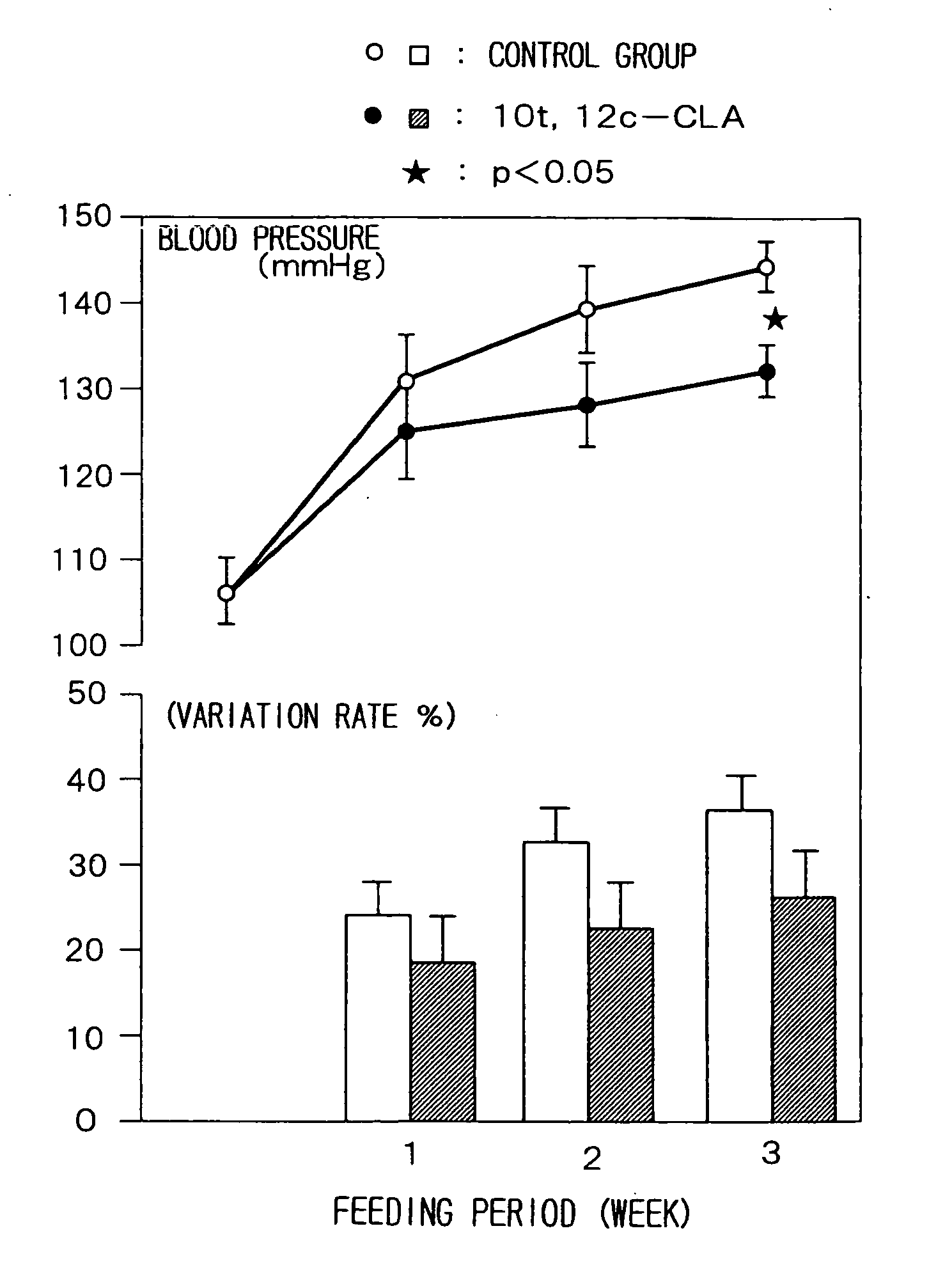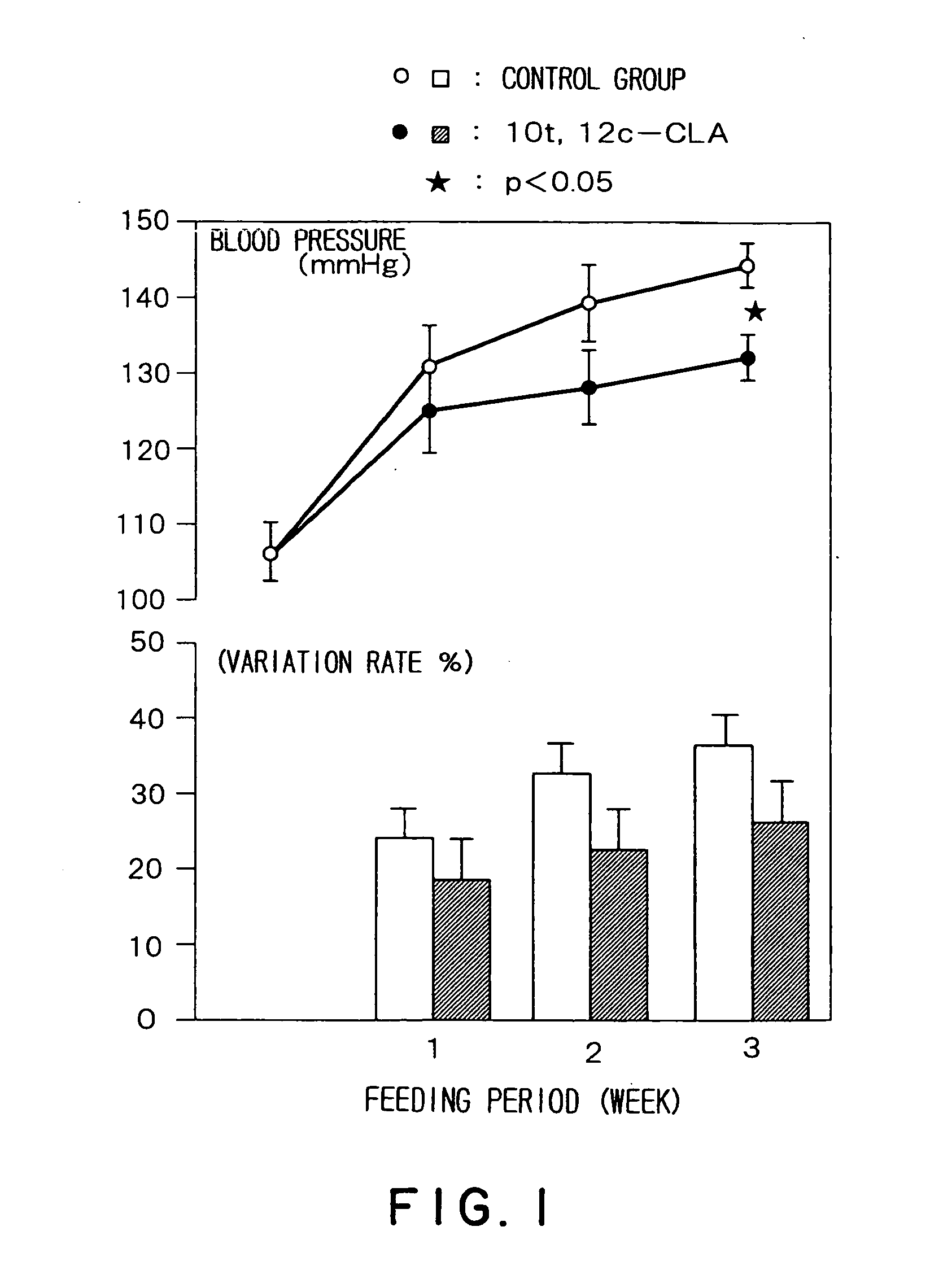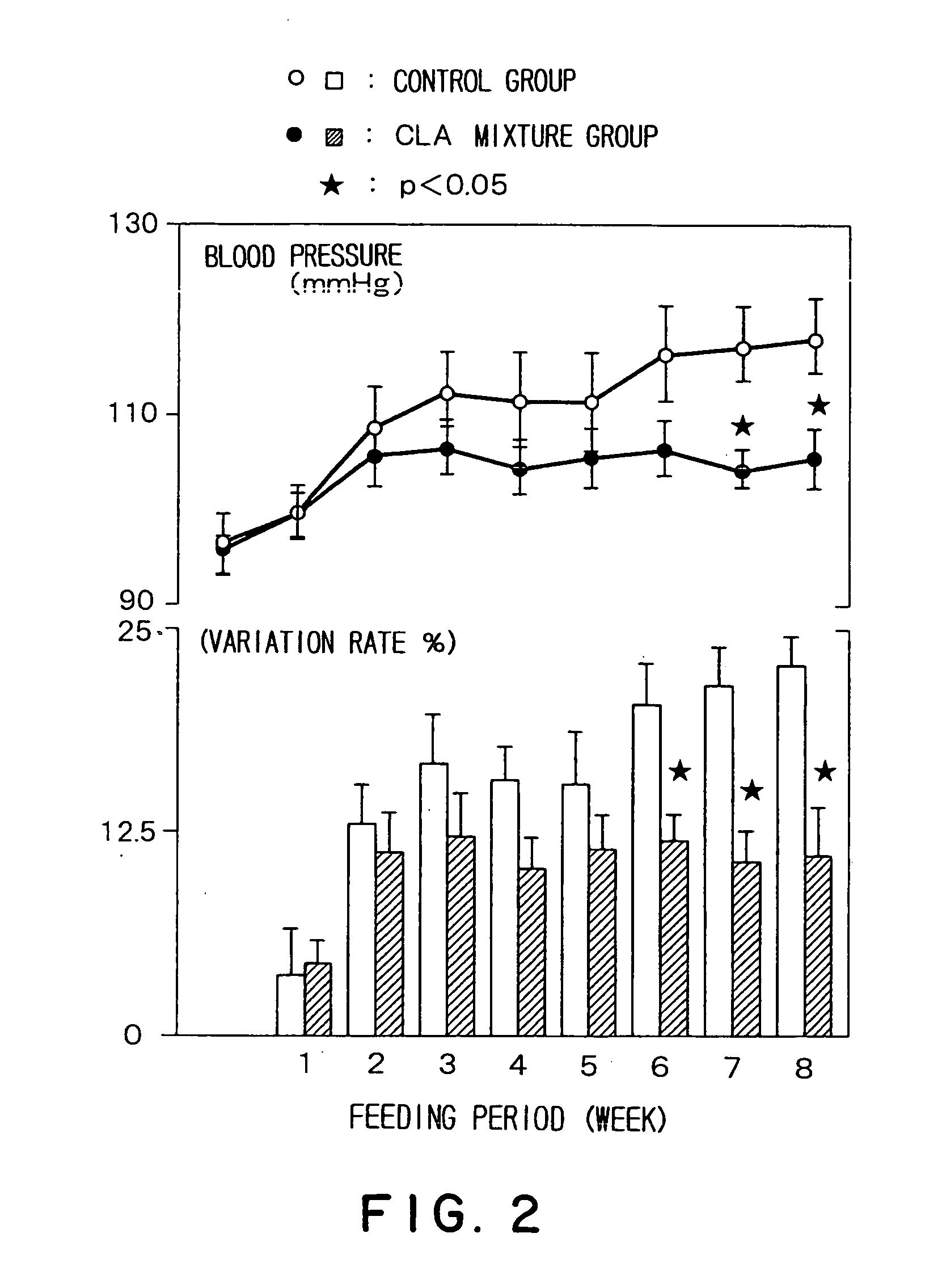Prophylactic agent of hypertension containing a conjugated fatty acid as an effective ingredient and the use thereof
a conjugated fatty acid and hypertension technology, applied in the field of hypertension or life style related diseases, can solve the problems of senile dementia, tachycardia, palpitatio cordis, edema, etc., and achieve the effects of preventing or ameliorating hypertension in the mammal, and promoting senility
- Summary
- Abstract
- Description
- Claims
- Application Information
AI Technical Summary
Benefits of technology
Problems solved by technology
Method used
Image
Examples
example 1
Separation of CLA Isomers
Alkali conjugation was carried out by the conventional method with linoleic acid (reagent grade, 98% by weight, Tokyo Kasei Kogyo Co., Ltd) as a raw material and propylene glycol (refer to Japanese Patent No.3017108). CLA obtained was a mixture of CLA isomers comprising 45.1% by weight of the 9cis,11trans-CLA and 46.8% by weight of the 10trans,12cis-CLA. As the first step of purification, the 9cis,11trans-CLA and the 10trans,12cis-CLA were separated. In a two-liter reaction container, to a mixture of 1,000 g of a CLA isomer mixture comprising 45.1% by weight of the 9cis,11trans-CLA and 46.8% by weight of the 10trans,12cis-CLA and 664 g of lauryl alcohol (1:1 mol / mol) was added lipase derived from Candida rugosa in a concentration of 20 U / g of mixture, and the resulting mixture was subjected to selective transesterification at 30° C. for 16 hours followed by molecular distillation according to the usual method to give a free fatty acid fraction in a yield o...
example 2
Purification of 10trans,12cis-CLA
To 235 g of a mixture of the free fatty acid fraction obtained in Example 1 and lauryl alcohol (1:1 mol / mol) was added lipase derived from Candida rugosa in a concentration of 30 U / g of mixture, and the resulting mixture was subjected to selective transesterification at 30° C. for 16 hours followed by molecular distillation according to the usual method to give a free fatty acid and a lauryl ester fractions (the fatty acid fraction of the distillate containing 86.3% by weight of 10trans, 12cis-CLA). The distillate fraction of the molecular distillation thus obtained was subjected to the addition of urea in ethanol according to the conventional method and subsequently to filtration under gradual cooling to give 95.7% by weight of 10trans,12cis-CLA.
example 3
Purification of 9cis,11trans-CLA
The lauryl ester fraction obtained in Example 1 was subjected to hydrolysis in the presence of alkali, NaOH, according to the conventional method. To 760 g of a mixture of the free fatty acid fraction thus obtained and lauryl alcohol (1:1 mol / mol) was added lipase derived from Candida rugosa in a concentration of 10 U / g of mixture, and the resulting mixture was subjected to selective transesterification at 30° C. for 16 hours to give an oil layer in a yield of 717 g. The reaction product was subjected to molecular distillation according to the conventional method, and the lauryl ester fractions collected were subjected to hydrolysis under the alkaline condition according to the conventional method to give the 9cis,11trans-CLA in a yield of 159 g (92.2% by weight).
PUM
| Property | Measurement | Unit |
|---|---|---|
| diastolic blood pressure | aaaaa | aaaaa |
| diastolic blood pressure | aaaaa | aaaaa |
| weight | aaaaa | aaaaa |
Abstract
Description
Claims
Application Information
 Login to View More
Login to View More - R&D
- Intellectual Property
- Life Sciences
- Materials
- Tech Scout
- Unparalleled Data Quality
- Higher Quality Content
- 60% Fewer Hallucinations
Browse by: Latest US Patents, China's latest patents, Technical Efficacy Thesaurus, Application Domain, Technology Topic, Popular Technical Reports.
© 2025 PatSnap. All rights reserved.Legal|Privacy policy|Modern Slavery Act Transparency Statement|Sitemap|About US| Contact US: help@patsnap.com



